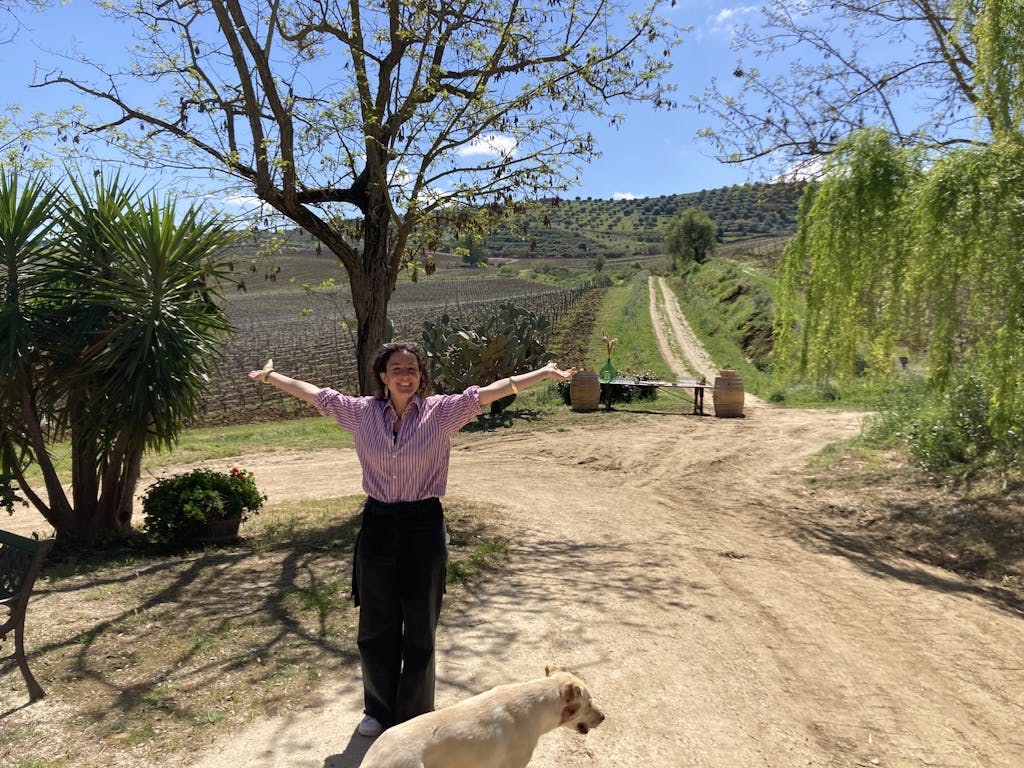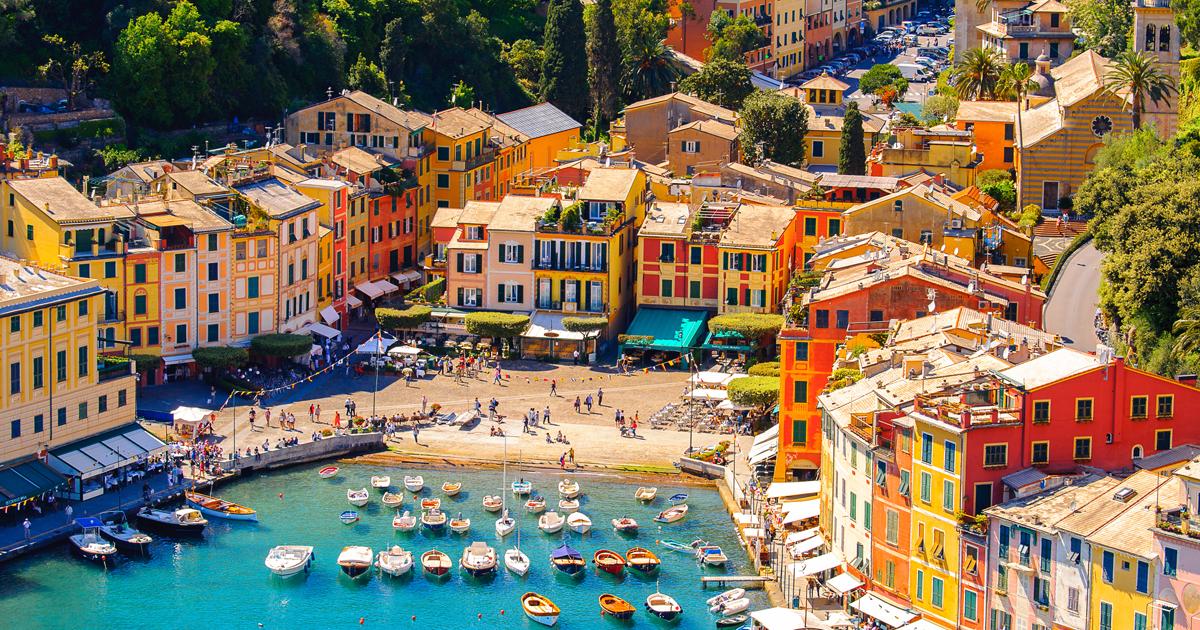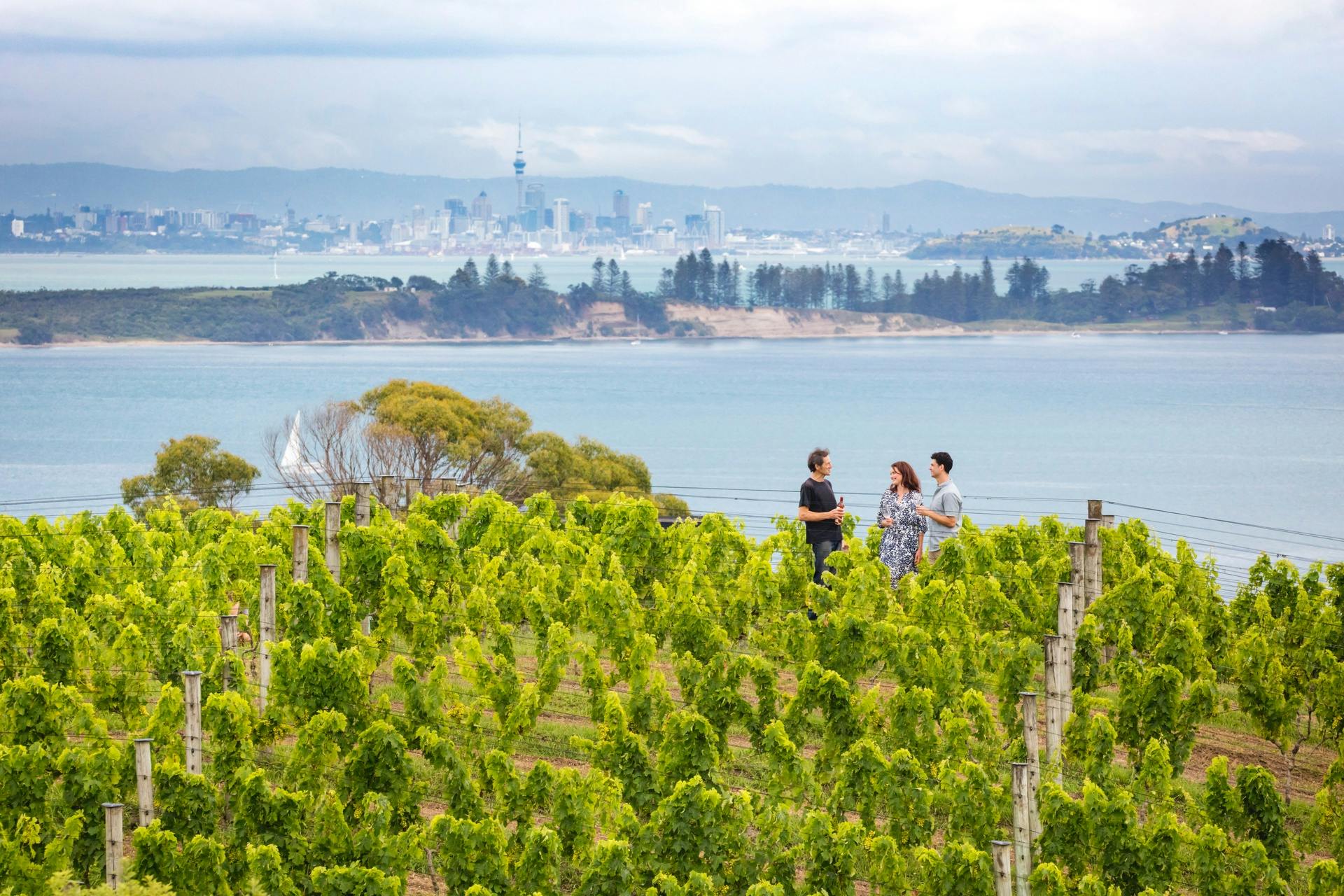Road Test, S.A.L.T. Experiences: In Palermo, Wine, Pasta and Cannoli with Sallier de La Tour
Debuting on Silver Moon and Silver Dawn, Silversea’s S.A.L.T., which stands for Sea and Land Taste, is an innovative new program celebrating the culinary arts of our destinations. There are four pillars to S.A.L.T. At S.A.L.T. Kitchen, a restaurant dedicated to showcasing food and wine from the region in which the ship is traveling, the regional menu offers daily-changing options based on the port of the day. In S.A.L.T. Lab, guests enjoy the challenge of cooking regional dishes. S.A.L.T. Bar celebrates cocktails made with local ingredients. All aim to bring the experience of life onshore onto Silver Moon and Silver Dawn.
The S.A.L.T. Experiences program moves in the opposite direction. This exclusive-to-Silversea series of shore excursions, hand-curated by local experts in the worlds of cuisine and wine, offers personal connections to the places we visit. In this series of stories, we share our experiences as we travel through the Mediterranean. We hope you’ll join us.
It’s 10 a.m. in Palermo, Sicily, and I’m trying to gather my group to head for Terranova, a historic bottega run since 1890 by hard candy masters, where we’re expected in 10 minutes. The problem is my group has no intention of being gathered, as everyone is having a great time exploring the mercato of Ballarò, one of the oldest, liveliest, rowdiest, most colorful and delicious open-air markets of Italy. I spot one of our guests taking a selfie with an arm-long eel, proudly held up by a fishmonger; another is busy sampling thick, oil-dripping anchovies, from a football sized can; yet another one is lost in contemplation of a pyramid of emerald green broccoli Romanesco, each one bigger than his head. A couple is enveloped by the smoke of a barbecue station, where a handsome butcher is grilling stigghiole. “What are they?” asks the guest. “Baby lamb’s intestines, wrapped around a whisp of spring onion, a typical Sicilian street food,” replies Costanza Chirivino.

Costanza is our host for the day. The heir and manager of the Sallier de la Tour wine estate, lodged in the green Monreale valley, 40’ outside of Palermo — our destination after the market — looks upon the scene with an indulgent smile. She knows too well how fun Ballarò can be. Her wicker basket is already full of groceries – sweet friggitelli peppers, enormous cucuzza zucchini, a sesame-crusted loaf of golden bread, a few bags of fresh spices, a wedge of cheese. She’s asked our guests to pick what they want to fry, later, for our pre-lunch aperitivo, so there’s also a bunch of sage, with leaves as big as the palm of my hand. I rub them and inhale their balsamic scent. The air is filled with the voices of the vendors, and a few feet away a lady lowers a basket from a second-floor balcony, “ordering” a few groceries from one of the stalls below. Ah, Ballarò.
Finally, our group assembles. The owner of bottega Terranova is eager to show us his tiny lab, where everything is still made the ancient way by a few highly skilled masters; we see a stack of antique cylinders that look like engraved brass scrolls. They’re used as stamps for sugar slabs, spread while still warm on marble countertops, like the ones for the signature caramella di carrube, Terranova’s best seller, made with pure carob infusion. The air is thick with the scent of caramel and anise, as that’s the flavor that’s being produced today. We grab a few bags for the road, and off we go. As we leave Palermo behind, heading for the hills surrounding the city, painted green and gold by wheat, olive trees and legumes, Costanza tells us a story. “I drive back and forth between Palermo and the estate, where I live, a few times a week. It’s never boring especially when I’m leaving the sea behind to go over the low pass near Giacalone and the valley opens up in front of me. It feels like entering a new dimension.”
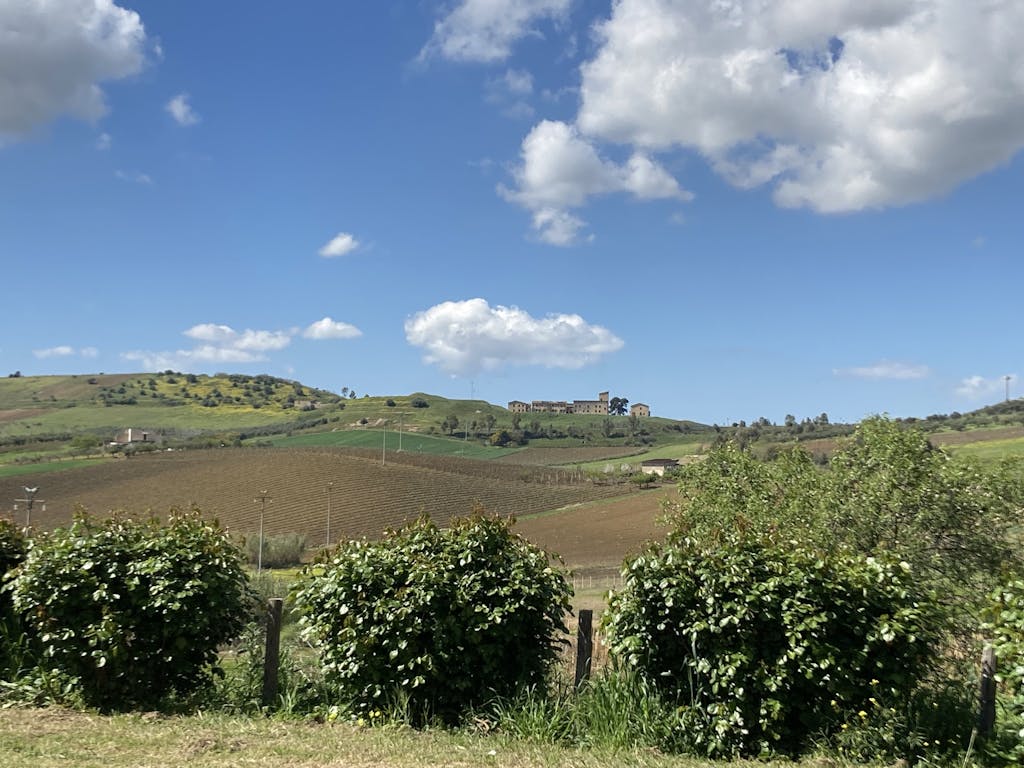
The Sallier de La Tour, princes of Camporeale, were among the first in the mid 19th century to plant vineyards in the Monreale territory, which has since been awarded the prestigious DOC (“designation of controlled origin”) and is known as the Sicilian cradle of Syrah. But the Sallier de La Tour project was really born in 2008, when prince Filiberto Sallier de La Tour entrusted his cousins, worldwide-famous winemakers Tasca d’Almerita, to care for his land as part of the family’s prestigious portfolio of estates (which also includes Regaleali, in the heart of Sicily, Tascante, on Etna, Capofaro, on the island of Salina, and Fondazione Whitaker, on the island of Mozia). Costanza, who is the heir of the Sallier de La Tour family, manages the estate and brings her fresh perspective to the project. She also happens to be a phenomenal host, fun and engaging, her enthusiasm contagious.
As the estate is reserved for us only, we immediately feel at home. We start with a tasting of extra virgin olive oils produced in the five Tasca estates, drizzled on thick chunks of bread and accompanied by a perfectly chilled Madamarosè, a 100 percent Syrah rosé, which is Costanza’s first original production in her managing role. The rosé is Costanza in a bottle: buonissimo, fresh, irreverent and aristocratic. With palm trees and vineyards as a backdrop, we listen as she tells us stories of her noble family and the three different Syrah produced by the over one century-old estate, as well as the other wines made from autochthone grapes Grillo, Inzolia and Nero d’Avola. Then we make our way towards the long table set up in the garden, under blooming acacia trees, while some of us get to frying, under the watchful eyes of Costanza and her young team.
We eat panelle (fried chickpea fritters), fried sage leaves and friggitelli. Some of Costanza’s girls have picked fresh acacia flowers and we fry those too, in a thick batter. There’s a “build your own pizzella” station, with a selection of toppings for our fried dough balls – I am partial to the buffalo mozzarella/anchovy/lemon zest combo. All the while, Costanza peels, dices, sautés, pours and entertains, skillfully explaining the island’s peculiar terroirs, its grapes and the sustainable philosophy permeating all of the family’s business, leading up to the launch of Tasca d’Almerita’s SOStain protocol, which is now the gold standard for the island’s premiere viticulture. Soon we’re joined by Nina and Alberto Agosta, owners of Pastificio Feudo Mondello: on a farm not far from Sallier they make exquisite artisanal pasta that has already gained the attention of none other than chef Alain Ducasse. We taste a plate of velvety, porous spaghetti, and some fusilli too, dressed lightly so as to let the full flavor of Sicilian wheat come through.
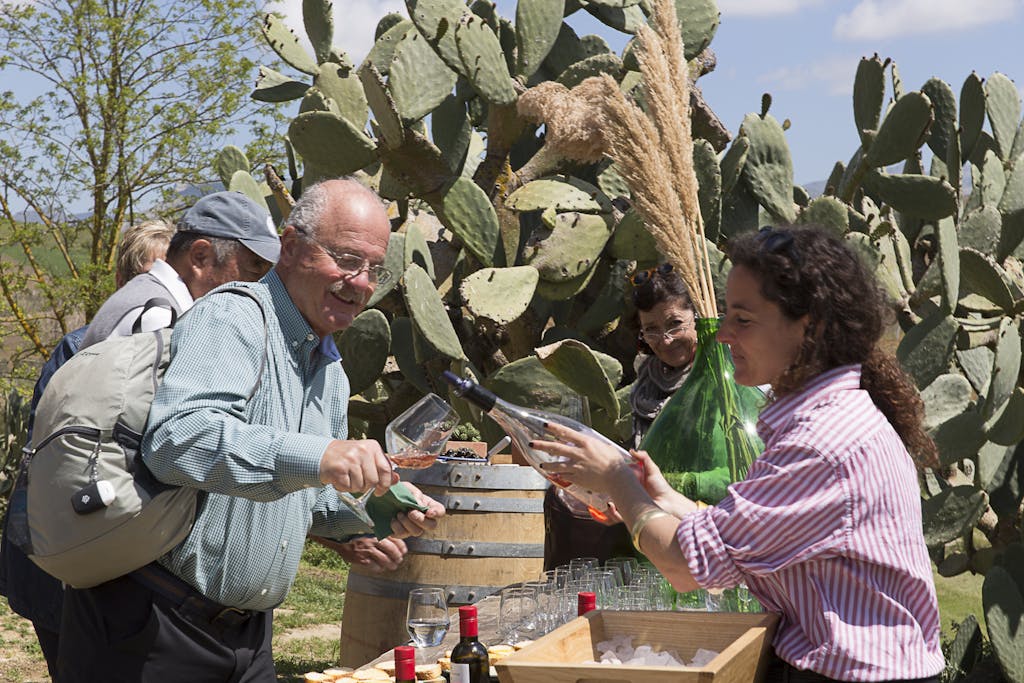
Nina, Alberto and their son only use local varieties of Durum wheat, including some heirloom: they’re all stone-milled (a rare feat in the world of pasta making, because it makes production more difficult), resulting in a pasta that is as fulfilling as filet, hearty, with a full bodied, layered flavor. After the pasta we taste traditional dishes from the Sallier de la Tour family cookbook, and Costanza pours more wines, not just from Sallier but also from all of Tasca’s domains. After a short break, enough to visit the cellar and to walk some of our lunch off, our host sets up a table with freshly brewed coffee, a mound of gigantic cannoli shells and bowls full of whipped ricotta. Asking for volunteers, she demonstrates how to assemble the typical Sicilian dessert. Except these are not your typical cannoli: they’re made by the pastry masters of nearby Piana degli Albanesi, with sheep’s milk ricotta and a secret recipe for the casing, which is remarkably thick and crumbly.
A guest says “wow, I feel like I’ve been coming here forever.” I look around: one of the gentlemen from our group is asleep under a tree, a glass of wine in his hand, and Costanza’s two dogs by his side. Once again, my group has no intention of being gathered: no one wants to leave. And why should we?



